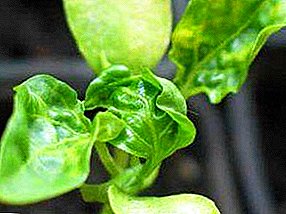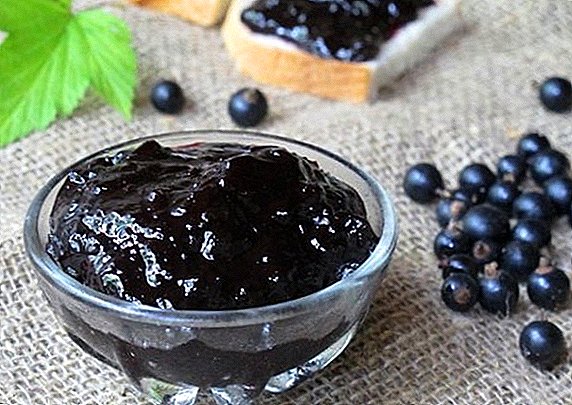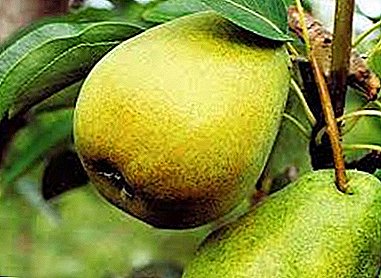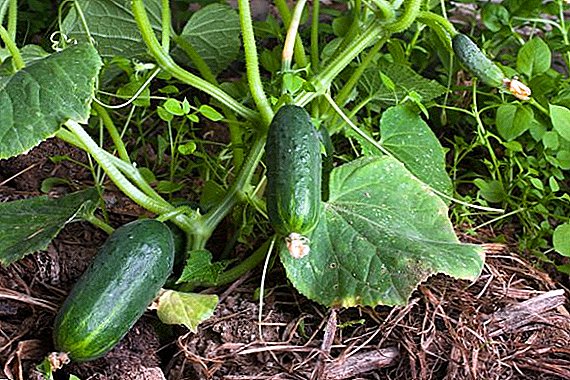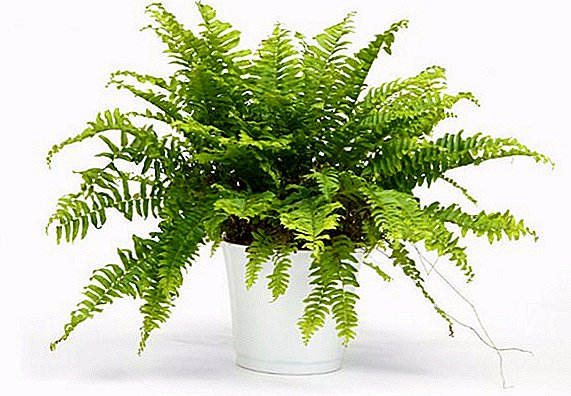 Many housewives grow ferns, which can perfectly plant trees in every corner of the room. In this article we will tell you about the fern home, which has the name nephrolepis. This plant is often used by florists to decorate open balconies and loggias, and as a houseplant. It will be a question of several most popular types of a fern which will perfectly get accustomed in any apartment.
Many housewives grow ferns, which can perfectly plant trees in every corner of the room. In this article we will tell you about the fern home, which has the name nephrolepis. This plant is often used by florists to decorate open balconies and loggias, and as a houseplant. It will be a question of several most popular types of a fern which will perfectly get accustomed in any apartment.
Nephrolepis Green Lady
Nephrolepis has 22 species that are distributed throughout the globe. Many of them can not be grown at home, as the substrate for the plant is a tree or tree shrub.  Homeland plants are the tropics of Southeast Asia, where the fern grows in humid climates.
Homeland plants are the tropics of Southeast Asia, where the fern grows in humid climates.
Buying such a plant, you will not only take care of the greening of the room, but also acquire an excellent “filter” that absorbs formaldehydes and other harmful substances from the air.
The Green Lady Fern is a sprawling lush plant with feathery leaves assembled into a rosette. Openwork leaves away from the vertically positioned rhizome. The fern is not demanding of light, since in its homeland it grows under cover of tall trees in partial shade.
Nephrolepis curly
Nephrolepis curly - fern, which was derived from nephrolepis sublime. The plant has a narrow crown, long shoots, on which lacy feathery leaves are located with wavy edges.  From a distance, the foliage on the shoots resembles curls, which is why the fern got its name. The plant loves heat and high humidity. If the room is too cold, the tropical plant can freeze.
From a distance, the foliage on the shoots resembles curls, which is why the fern got its name. The plant loves heat and high humidity. If the room is too cold, the tropical plant can freeze.
Important! The plant does not tolerate the flow of cold air that occurs during drafts.
Nephrolepis sickle
Crescent-shaped nephrolepis is a large fern, the shoots of which can reach a length of 1.2 m. The leaves have a length of up to 10 cm, dentate, are colored in green or yellowish-green. The name of the species was due to the fact that the shoots at the base are very curved and in shape resemble a sickle.  The plant is fed at least 2 times a month. A special fertilizer is used for ferns or, alternatively, for palm trees. All types of nephrolepis are resistant to most pests, except for the scythe.
The plant is fed at least 2 times a month. A special fertilizer is used for ferns or, alternatively, for palm trees. All types of nephrolepis are resistant to most pests, except for the scythe.
Nephrolepis cardiovascular
Nephrolepis has many species and varieties, but the heart is one of the most popular.
The main difference of this species are natural swellings, which are formed on the tubers of the plant. Fern leaves grow strictly upwards, are painted in dark green color.  Fern is used as a home plant since the middle of XIX century. It is also used to make bouquets. Green shoots are perfectly combined with bright colors.
Fern is used as a home plant since the middle of XIX century. It is also used to make bouquets. Green shoots are perfectly combined with bright colors.
Important! Nephrolepis, like any other fern, does not bloom, so it’s impossible to see the flower of nephrolepis. The plant propagates by spores or division of the green part.
Nephrolepis xiphoid
Nephrolepis xiphoid - a large fern, whose shoots reach a length of 250 cm. In nature it grows in America (Florida, tropical islands). It is grown as an ampelous plant.  The plant nephrolepis at home may not grow as much as in nature, so if you want to grow a two-meter giant, you will need to "create" the tropics in your apartment.
The plant nephrolepis at home may not grow as much as in nature, so if you want to grow a two-meter giant, you will need to "create" the tropics in your apartment.
Did you know? There are no true fern leaves yet. But in their direction they took the first steps. The fact that a fern resembles a leaf is not at all a leaf, but by its nature - a whole system of branches, and even located in one plane.
Nephrolepis exalted
Fern sublime - a type of nephrolepis with a shortened vertical root system. The shoots are collected in a rosette, peristosyllabic, reach a length of 70 cm, are painted in a light green color, have short petioles. Up to 50 “feathers” can be placed on each shoot. The leaves are 5-6 cm long, lanceolate, painted in light green color.  Leafless shoots (lashes) grow from the rhizome, which give rise to new plants. Nephrolepis sublime has a considerable number of varieties:
Leafless shoots (lashes) grow from the rhizome, which give rise to new plants. Nephrolepis sublime has a considerable number of varieties:
- Roosevelt (shoots stick out in different directions, have wavy segments);
- Maasa (compact nephrolepis variety that has wavy leaves);
- Scott (a small fern with twisted leaves);
- Emina (undersized variety, which differs upright shoots; leaves curly, jagged at the edges).
Important! A variety derived from a particular species has the same basic parameters as a species, with the addition of small varietal differences.
Nephrolepis Boston
Nephrolepis Boston is a type of elevated nephrolepis. The name of the fern suggests that it was bred in Boston, USA. The plant immediately received a staggering popularity with both breeders and ordinary citizens. A distinctive feature of the artificially bred fern are straight-growing fronds, which reach a length of 120 cm.  Nephrolepis Boston has several varieties, the hallmark of which is the pinnacle of the leaves.
Nephrolepis Boston has several varieties, the hallmark of which is the pinnacle of the leaves.
- Grades Hills and Fluffy Raffles. Spreading fern, which differs from the Boston double-pinnate leaves.
- Whitman variety. The plant has three feathery leaves, otherwise the fern is similar to the Boston.
- Smith grade. Fern with four feathery leaves. A rather rare and very beautiful variety that looks spectacular in an ensemble with flowers.
Nephrolepis Sonata
Nephrolepis Sonata is a miniature light green fern with short shoots. It has large leaves that are collected in the outlet. The total height of the plant does not exceed 55 cm.  The plant is lush, neat, the green part is very dense, it looks like a small ball. The plant loves diffused light, can grow with artificial light. Nephrolepis is demanding of humidity and temperature (if it is very hot in the house, then the plant should be sprayed with a spray bottle).
The plant is lush, neat, the green part is very dense, it looks like a small ball. The plant loves diffused light, can grow with artificial light. Nephrolepis is demanding of humidity and temperature (if it is very hot in the house, then the plant should be sprayed with a spray bottle).
The fern loves slightly damp soil and needs spring and summer dressing. Given the required conditions of detention, Sonata fern can be grown both in the house, and in the form of additional landscaping in the office.
Nephrolepis Corditas
Corditas refers to terry ferns and is a separate type of nephrolepis. The plant is characterized by small fluffy leaves, which are dotted with vayi plants. Corditas has upright shoots that are painted in a light green color. Conditions of detention, temperature and lighting is the same as in other types and varieties of nephrolepis. 
Did you know? In the tropics, trunks of ferns serve as building material, and in Hawaii their starchy core is used as food.We introduced you to the most popular nephrolepis fern species and varieties. The plant looks great in the living room and is indispensable in the nursery, as it cleans the air and saturates it with oxygen.


